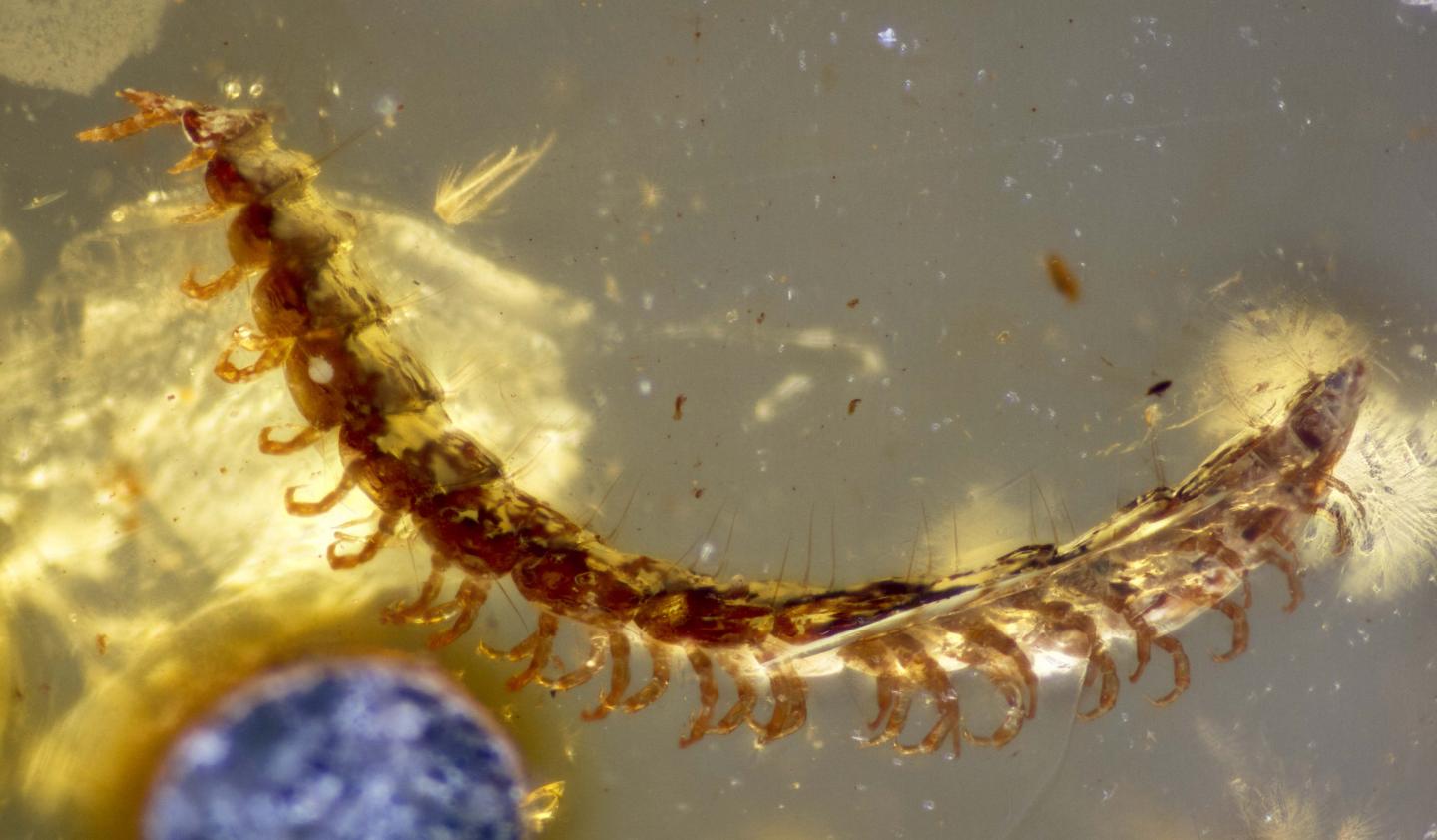This Preserved Millipede Lived 99 Million Years Ago Alongside Dinosaurs
Some 99 million years ago, a tiny millipede got stuck in tree resin and perished. Its exquisitely preserved body, coiled into a serpentine position, survived the eons and has now been recognized as an entirely new species.
Called Burmanopetalum inexpectatum, the stunning specimen is described in detail in a paper published Thursday in the journal ZooKeys.
Led by Pavel Stoev, a zoologist the National Museum of Natural History in Sofia, Bulgaria, the authors emphasize that this is the "first fossil millipede of the order Callipodida," which is a family of millipedes that is still thriving around the world today.
The millipede measures only 8.2 millimeters in length, making it an "an extreme case of miniaturization" for its order, the study said.
Despite its diminutive size, Stoev and his colleagues were able to image the specimen in detail with advanced techniques such as 3D X-ray microscopy. The millipede is so intact that its reproductive organs are recognizable, making it possible to identify it as an adult female.
"We were so lucky to find this specimen so well preserved in amber," Stoev said in a statement. New imaging technologies allowed the team to "reconstruct the whole animal and observe the tiniest morphological traits which are rarely preserved in fossils," he added.
B. inexpectatumis one of over 529 millipede specimens privately owned by Patrick Mi1/4ller, who has amassed the biggest collection of dinosaur-aged amber in Europe. Over the past few years, Mi1/4ller has invited scientists to study the millipedes, which has produced a burst of recent research into the ancient evolution of these creatures.
 Another millipede from the Mi1/4ller collection. Image: Dr Thomas Wesener
Another millipede from the Mi1/4ller collection. Image: Dr Thomas Wesener Millipedes may not be the flashiest creatures in the fossil record. But as the earliest animals to colonize terrestrial environments over 400 million years ago, they played a trailblazing role in the emergence of life on land.
Get six of our favorite Motherboard stories every dayby signing up for our newsletter.